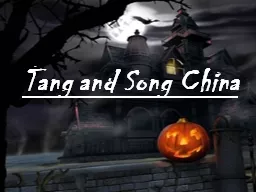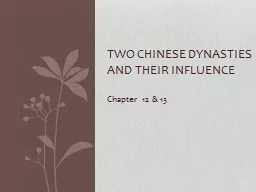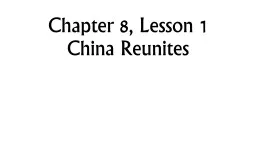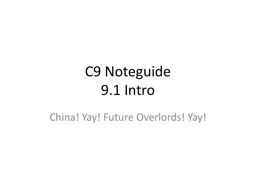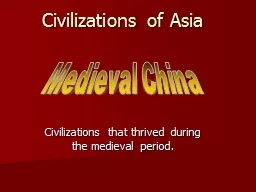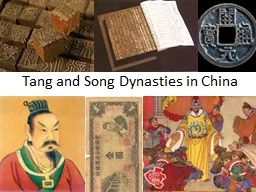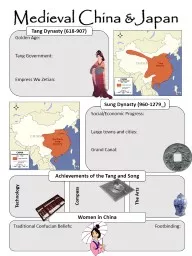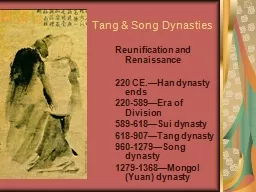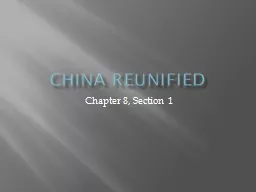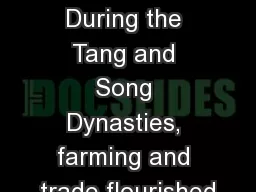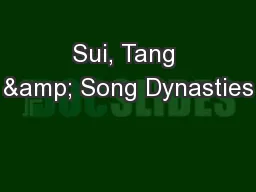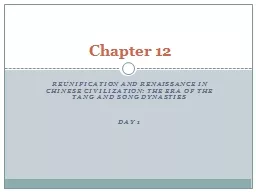PPT-Tang and Song China
Author : alida-meadow | Published Date : 2016-07-25
Sui Dynasty 589618CE Yang Jian seized the Mandate of Heaven from boy Wanted centralized strong govt Grand Canal help trade between north and south China Series
Presentation Embed Code
Download Presentation
Download Presentation The PPT/PDF document "Tang and Song China" is the property of its rightful owner. Permission is granted to download and print the materials on this website for personal, non-commercial use only, and to display it on your personal computer provided you do not modify the materials and that you retain all copyright notices contained in the materials. By downloading content from our website, you accept the terms of this agreement.
Tang and Song China: Transcript
Download Rules Of Document
"Tang and Song China"The content belongs to its owner. You may download and print it for personal use, without modification, and keep all copyright notices. By downloading, you agree to these terms.
Related Documents

